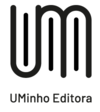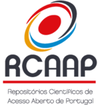Submissions
Submission Preparation Checklist
As part of the submission process, authors are required to check off their submission's compliance with all of the following items, and submissions may be returned to authors that do not adhere to these guidelines.- The submission has not been previously published, nor is it before another journal for consideration.
- Working languages: texts proposed for publication written, alternatively, in Portuguese, English, French, Spanish or Galician are accepted.
- The files for submission are in Microsoft Word or OpenOffice format (as long as they do not exceed 10MB).
- The text follows the style standards and bibliographic requirements described in Author Guidelines, in the section About the Magazine.
- The articles sent to the thematic section of the Journal must be in accordance with the theme proposed in the Call for Publication, available on the Journal's page. For the Varia Section, the topics of the articles are free, as long as they are correlated with the general scope of the publication.
- Reviews must refer to literary, artistic or theoretical-critical works within the thematic scope of the publication, published, at most, in the last twelve months, based on the edition of the Journal to which the text is submitted.
- The interviews submitted to the Journal must be addressed to writers, artists, critics, researchers or other personalities whose sphere of professional intervention is related to the thematic scope of the publication.
- All authors indicated in the texts proposed for publication fulfill the authorship criteria, have read and approved the submitted version. The published texts are the responsibility of the respective authors.
- All copyrights of the reproductions used must be ensured by the respective authors; the necessary authorizations for the publication of data on persons who can be identified must also be presented.
- The authors guarantee to fully collaborate in the review process after the acceptance of their article for publication. In case of non-compliance with this collaboration, the article will not be published, even with the declaration of acceptance.
Privacy Statement
The names and email addresses entered in this journal site will be used exclusively for the stated purposes of this journal and will not be made available for any other purpose or to any other party.

.jpg)










